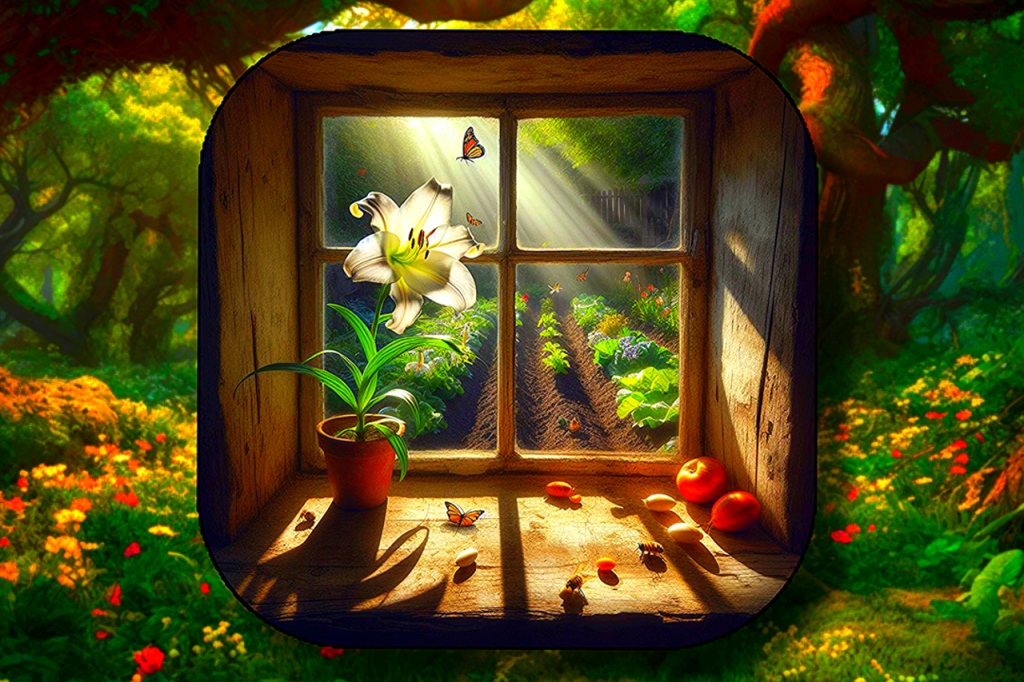
In a quaint little cottage nestled at the edge of a sun-kissed meadow, lived Poppa Tom and his faithful hound, Lucy Lou. Their bond was as strong as the roots of the vegetables that grew in their small but cherished garden—the Veggie-Bed.
Lucy Lou was no ordinary dog. She had a purpose beyond fetching sticks or chasing her tail. Her duty was to protect the Veggie-Bed from any intruders—especially the pesky varmints that lurked nearby.
Every morning, Lucy Lou would rise with the sun. Her keen eyes scanned the dew-kissed leaves of the lettuce, the plump tomatoes, and the vibrant carrots. She knew each vegetable by name, as if they were her own kin.
The squirrels were her sworn enemies. They would dart across the garden, their tiny paws digging into the soil, stealing seeds and nibbling on tender shoots. But Lucy Lou was vigilant. She’d chase them away, barking fiercely, her tail a blur of determination.
The rabbits were trickier. They’d hop in, their fluffy tails twitching, and nibble on the edges of the cabbage leaves. Lucy Lou would give them a stern look, as if saying, “Not on my watch!” And off they’d hop, startled by her authority.
Occasionally, a raccoon would venture near the Veggie-Bed. These masked bandits were cunning—they’d tiptoe silently, their nimble fingers plucking ripe strawberries or digging up potatoes. But Lucy Lou had a sixth sense. She’d catch their scent, her nose quivering, and then the chase would begin.
Through rows of corn and beanstalks, Lucy Lou would sprint, her ears flapping like wings. The raccoon would zigzag, desperate to escape. But Lucy Lou was relentless. She’d corner it near the old apple tree, her bark echoing through the orchard. The raccoon would surrender, its eyes wide with fear, and retreat into the woods.
Lucy Lou wasn’t just a fierce guardian; she was also a sweetheart. After each chase, she’d return to Poppa Tom, her tongue lolling, and nuzzle his hand. He’d stroke her velvety ears and say, “Good girl, Lucy Lou. You’re the Veggie-Bed’s true hero.”
And so, the seasons danced. Spring brought tender lettuce and fragrant herbs. Summer painted the garden with sunflowers and zucchinis. Autumn draped the pumpkin vines in orange, and winter whispered secrets to the dormant soil.
Lucy Lou’s loyalty never wavered. She’d curl up near the Veggie-Bed, her eyes half-closed, listening to the rustle of leaves. Sometimes, Poppa Tom would sit beside her, sharing stories of his youth and the magic of growing food from the earth.
For Lucy Lou was more than a hound; she was the Guardian of the Veggie-Bed—a title she wore with pride, her eyes shining like the morning sun. And in that sun-kissed meadow, love and loyalty blossomed alongside the vegetables, creating a tale that would be whispered for generations to come.
A Note from Tom:
A blurred line –
To create a desired story, the process begins by outlining my concept, and constructing a storyboard. After that, AI is used to refine and enhance the narrative while producing a complementary image. The story is extensively rewritten, and the image is carefully edited until they meet my standards. At times, it can be challenging to distinguish between my contributions and those of AI. This intricate process takes around six to eight hours to complete, resulting in a final product that perfectly reflects my original vision.
Writer/Digital creator/Prompt designer: Tom Myrick
YouTube: www.youtube.com/@urbangardening4u2day17
View on Facebook: https://www.facebook.com/profile.php?id=61555328057879







You must be logged in to post a comment.